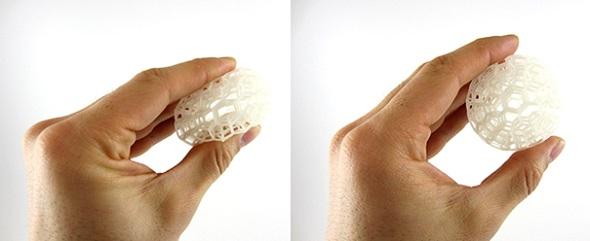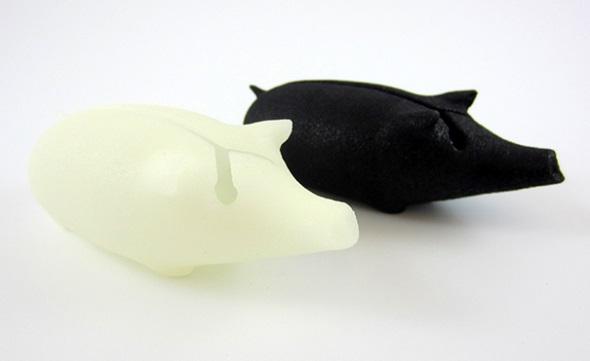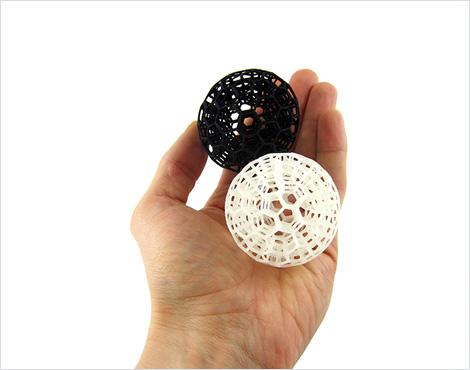 The team at i.materialise says models made using their rubber-like 3D printing material were constructed from an off-white, very fine, granular powder which was dyed black. What you got was a part which is strong, highly-flexible and durable.
The team at i.materialise says models made using their rubber-like 3D printing material were constructed from an off-white, very fine, granular powder which was dyed black. What you got was a part which is strong, highly-flexible and durable.
The technical name of the material is TPU 92A-1, and it’s a thermoplastic polyurethane. Now i.materialise says printing in this flexible rubber-like material just got better. Where once only a “dyed black” option was available, you can now order your 3D print in natural white as well.
These 3D printing flexible materials are excellent for bracelets, fashion accessories or even scale-model tires. The natural white option for rubber-like materials is by far the most flexible material i.materialise offers, and they say objects created with it can be squeezed without breaking.
The company says the rubber-like options give designers the freedom to print objects up to 32 x 27 x 30 cm. They can also produce “interlinking parts.”
The materials are used in the Selective Laser Sintering process.
The new rubber-like material costs a little over $2 per cubic centimeter (and there’s a handling cost per model of just over $5), but for each extra copy of a given model, the handling cost drops from the $5 to around $3 per model.
But there is a bit of a catch. The company says they can’t sell — or even distribute — objects made from the materials in the United States yet.
“We’re still working on this issue and hope to give you some more good news in the future,” the company says of the US ban.
The company says the rubber-like material is perfect for models requiring shock absorption, like gadgets, squeezeable models, or a range of functional models. It can be printed in a minimum wall thickness of 1 mm and at levels of minimum detail down to 0.5 mm. If and when the material does become available in the US, i.materialise recommends that you read their design guide for crucial specifications on printing with the rubber-like product.
Do you think you’d be interested in this latest 3D print material and trying out the new color option? And why do you think the material is banned in the US? Let us know in the New Color Option for Rubber-Like Material forum thread on 3DPB.com. Check out some photos — and a Vine loop — below of objects 3D printed using this rubber-like material, showing their flexibility.
Subscribe to Our Email Newsletter
Stay up-to-date on all the latest news from the 3D printing industry and receive information and offers from third party vendors.
You May Also Like
3D Printing Unpeeled: Biofuel Waste to Filament & Sustainable Photopolymers
I can’t ever remember a day with so many potentially high impact news stories have come out. In one story, we all know that there are problems with the safety...
Finnair Hires AM Craft to 3D Print Plastic Parts for Aircraft Interiors
Riga-based AM Craft, a supplier specialized in 3D printing aviation components and certified under EASA Part 21G, announced a significant achievement today. The company will assist in upgrading Finnair’s A320...
3DPOD Episode 198: High Speed Sintering with Neil Hopkinson, VP of AM at Stratasys
Neil Hopkinson, a pioneering 3D printing researcher, played a pivotal role in developing a body of research that is widely utilized today. He also invented High Speed Sintering (HSS), also...
3D Printing Webinar and Event Roundup: May 12, 2024
Webinars and events are picking up in the AM industry this week! ASTM International continues its Professional Certificate Course and Stratasys continues its advanced in-person trainings, while 3D Systems is...





































